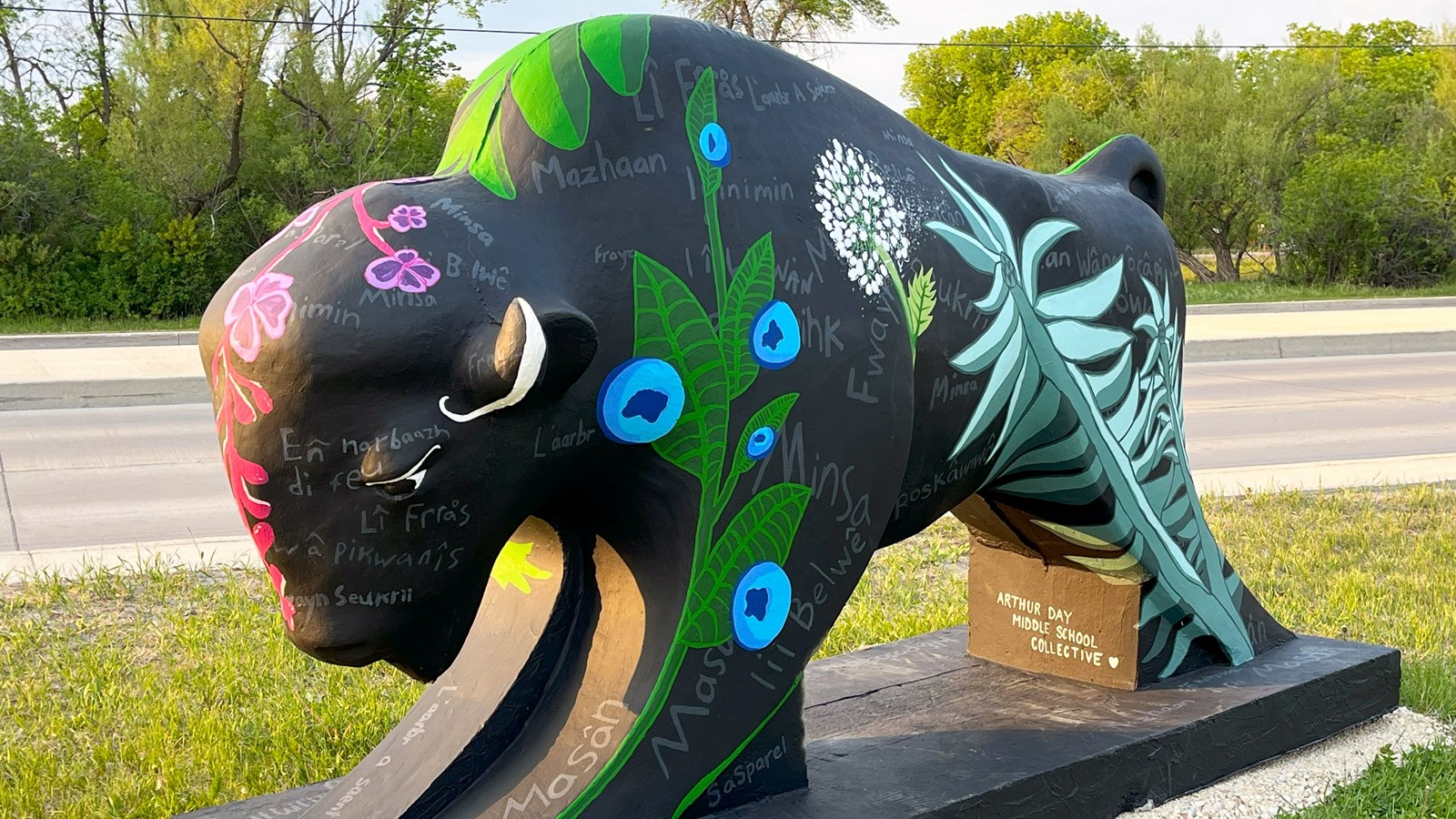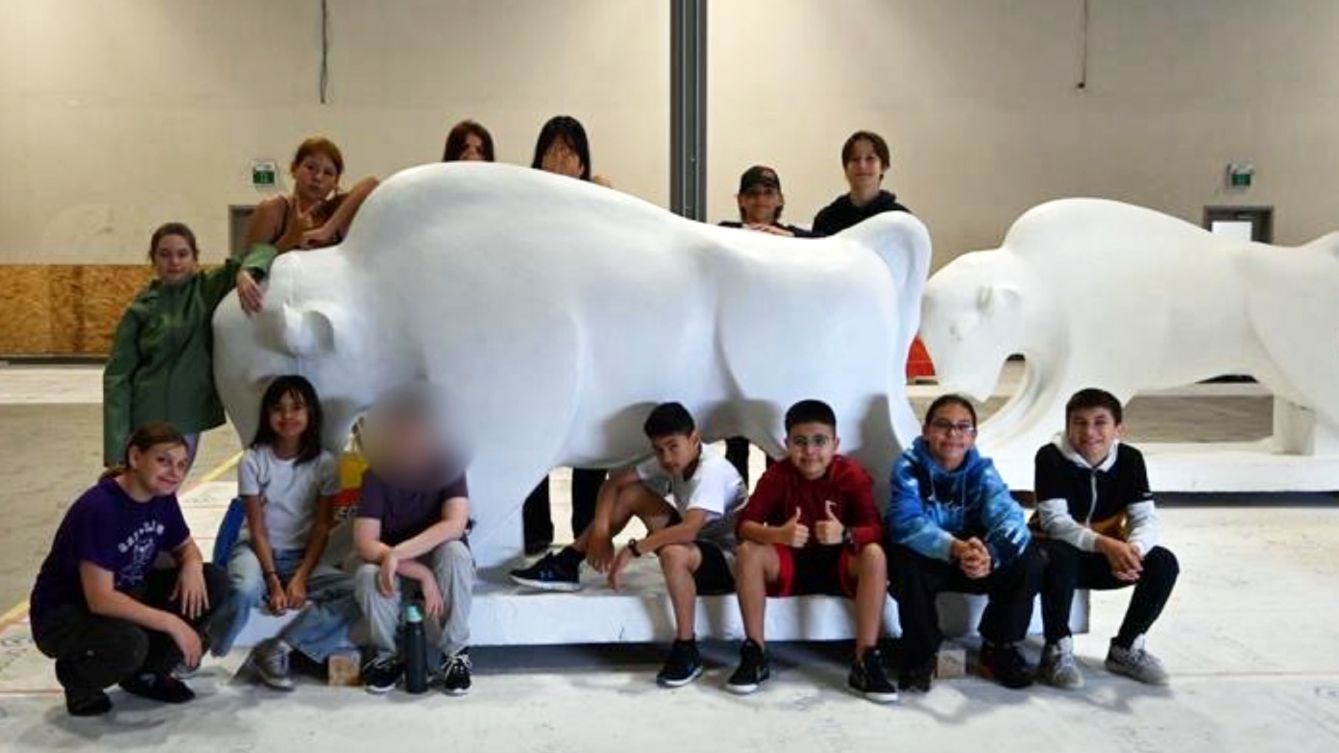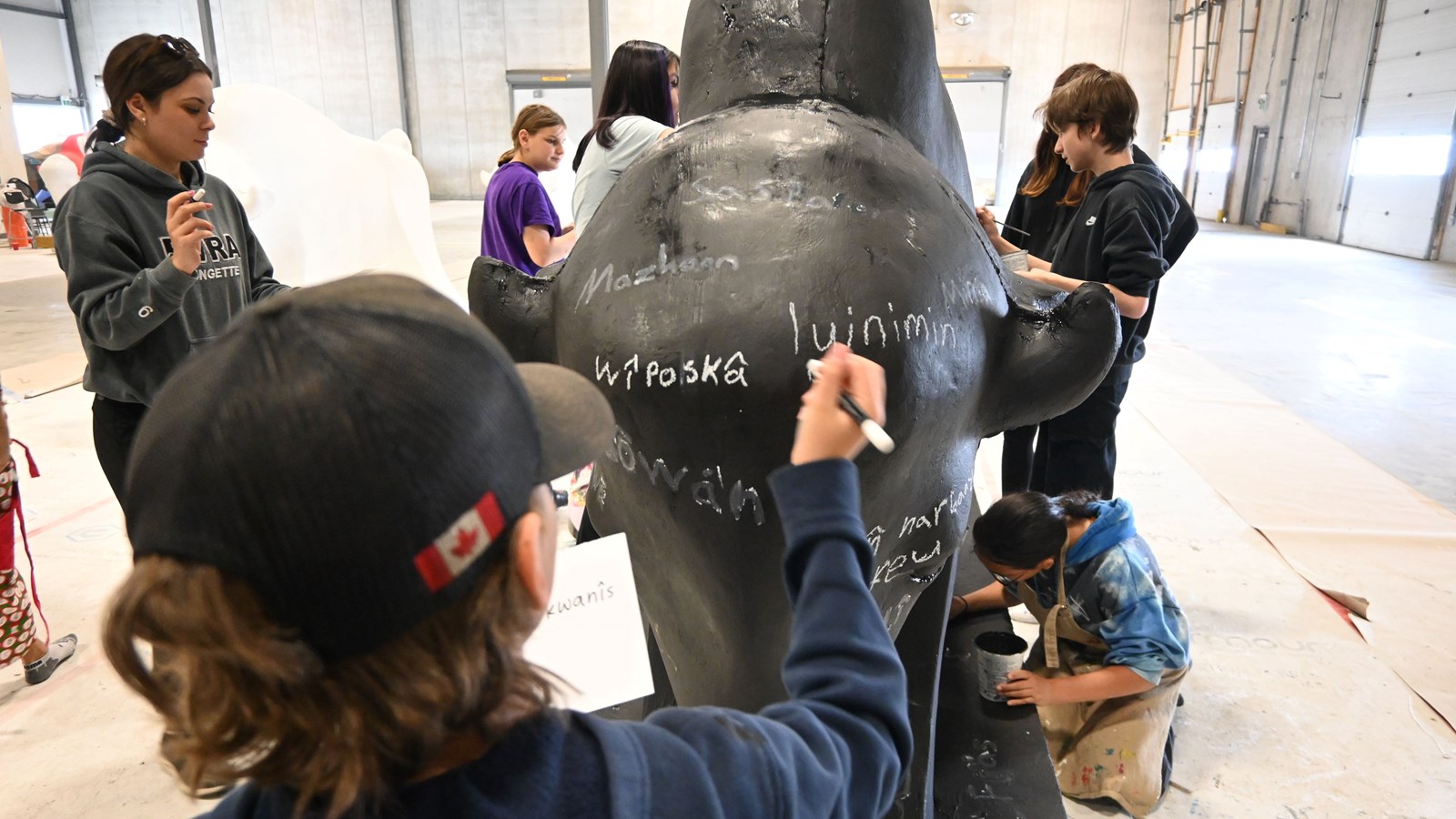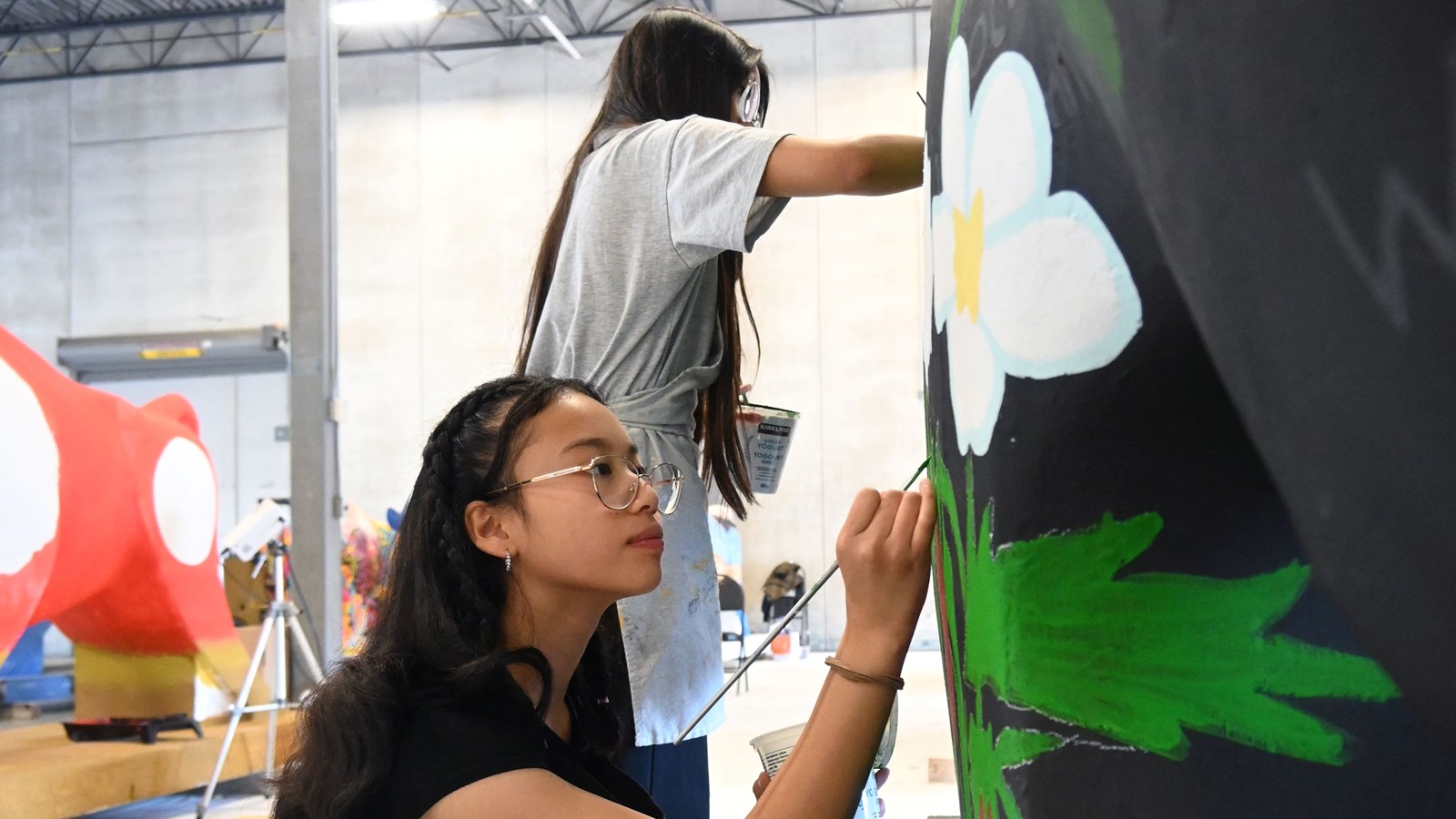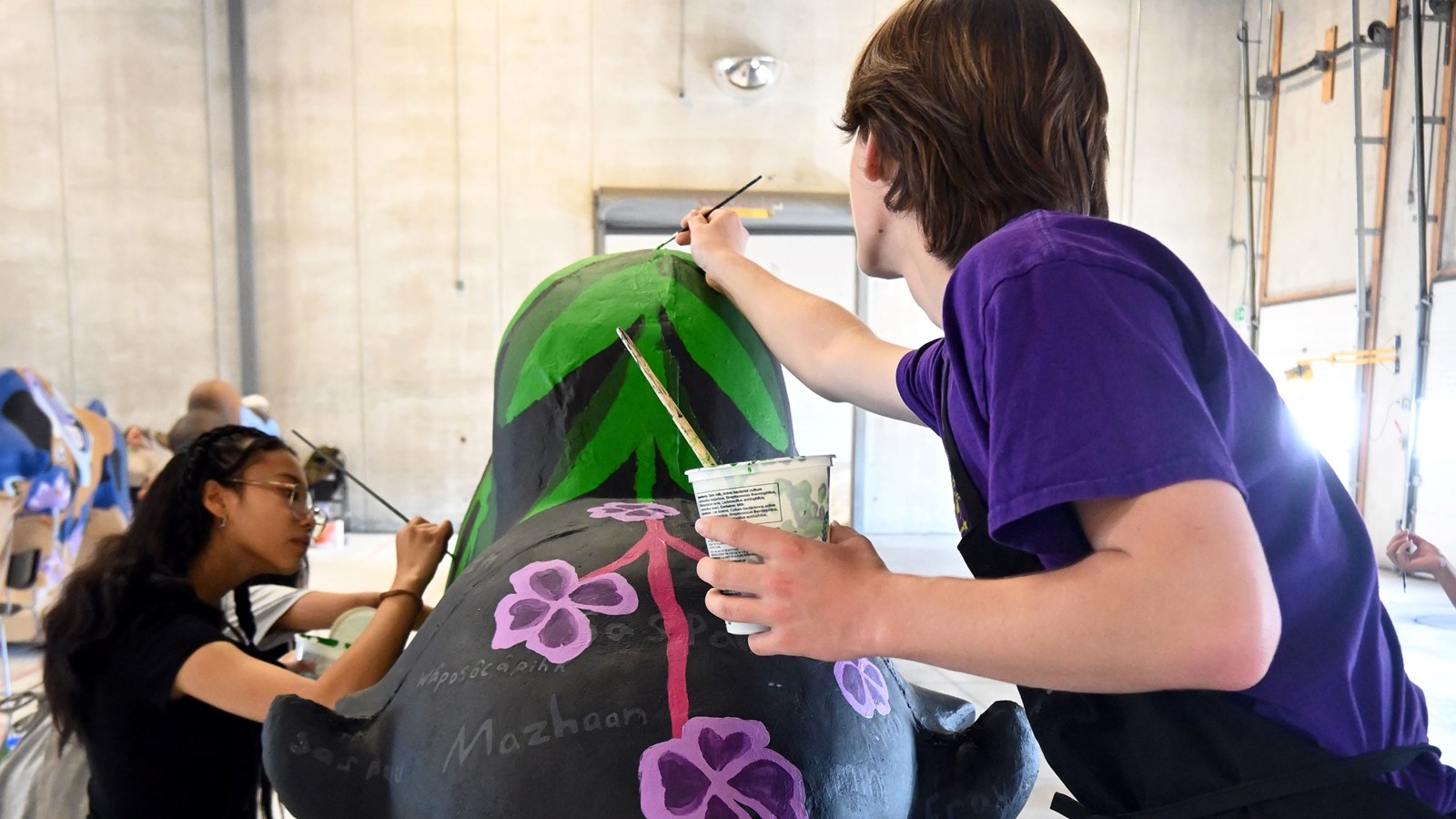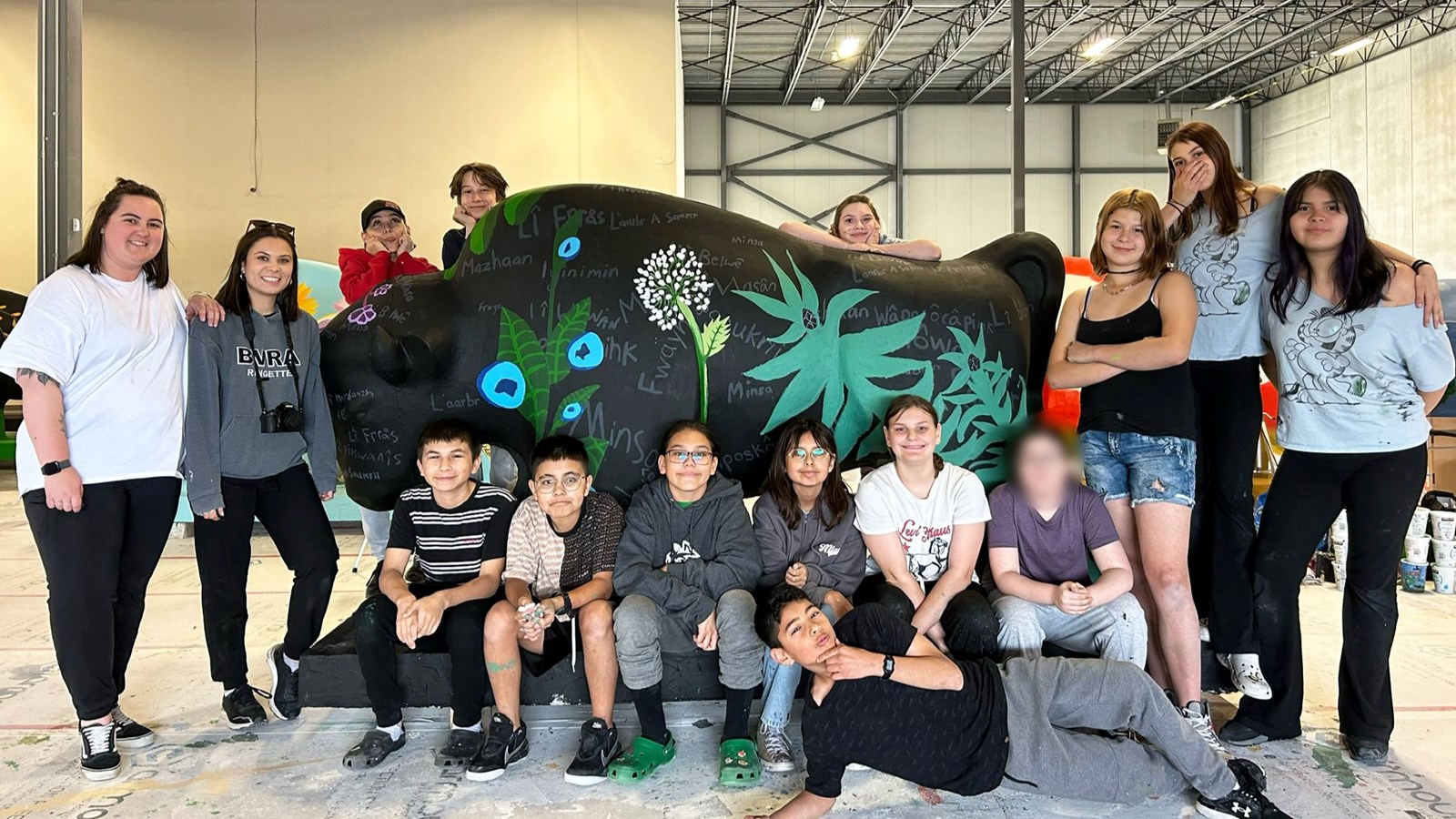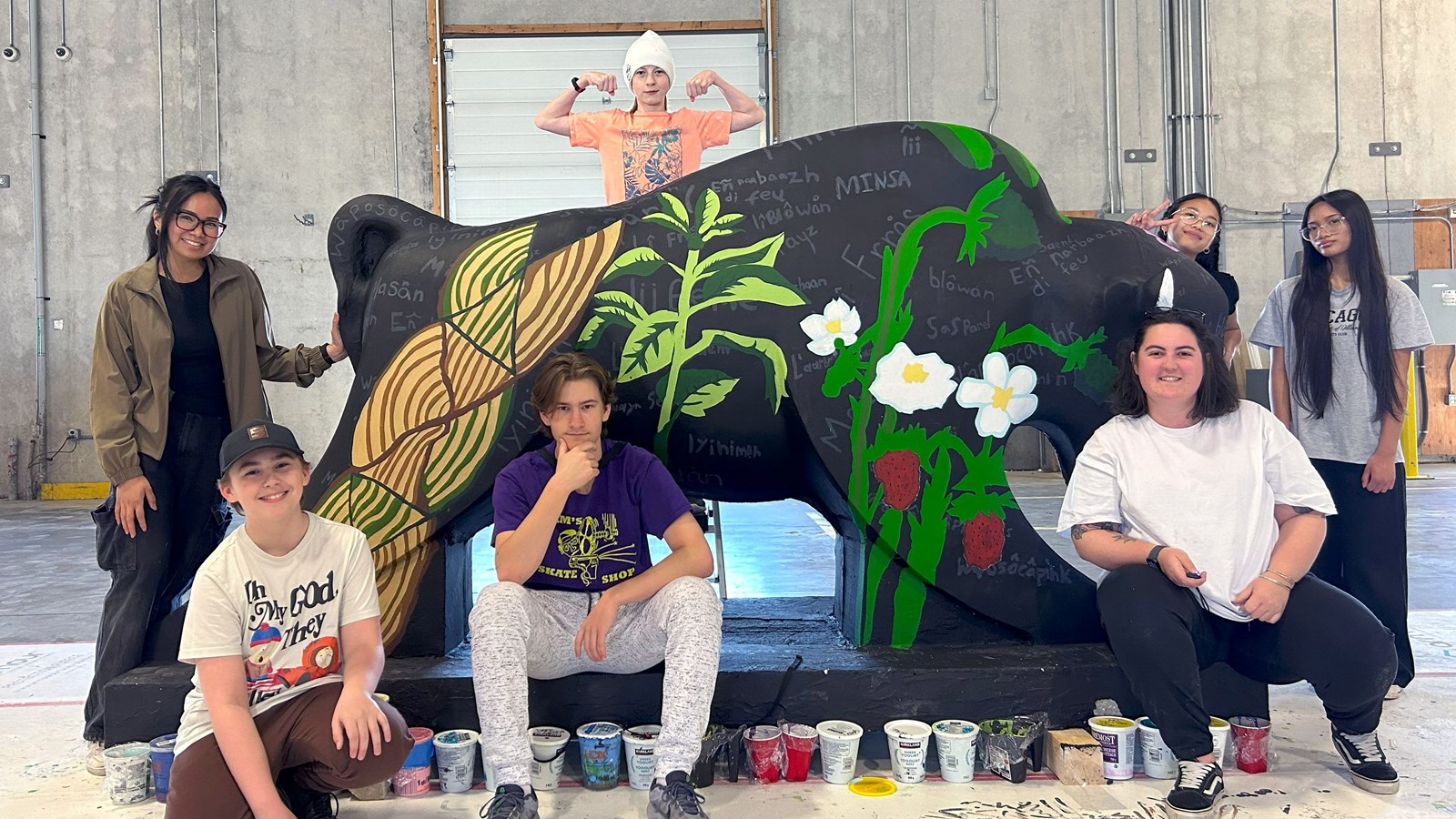Bison Painted by Arthur Day Artists Displayed on Roblin Blvd.
On May 28, the combined artistry of a group of Arthur Day Middle School students was unveiled on the south side of Roblin near Shaftesbury—their contribution to the Bison on the Boulevard project created by the Toba Centre for Children & Youth. The Arthur Day Middle School Collective is comprised of 18 students with a passion for learning about Indigenous culture and strong creative skills.
In January 2025, the students answered a call to artists from the centre for the project, which is intended to bring attention to the work the centre does in the community and to highlight their new facility near Roblin Boulevard.
In February, they found out their collective was shortlisted. They submitted a design focused on their connection to the land and Michif medicines, also emphasizing that healing the mind, body, and spirit is not a linear path.
In April, the students discovered their design was one of 25 selected by the centre and their donors, and they would have the honour of painting a bison. Their experience of arriving at the warehouse and seeing the herd of concrete bison was surreal. Students jumped straight to work painting their bison and exploring other artists’ interpretations of the project. They asked questions, read artist statements, referred to our design, made creative choices in the moment, worked collaboratively with others, and made impactful memories that centred on a visual arts experience.
Their bison—Where the Bison Walk, the Spirit Heals—will be on Roblin Boulevard from now until October 2025. They are incredibly grateful to Toba Centre and its generous donors for trusting them with this project, their excitement is unmatched, and they are proud to be amongst other incredible Winnipeg artists in a public display of community.
ARTIST STATEMENT
Where the Bison Walk, the Spirit Heals
By Arthur Day Middle School Collective
We designed our bison as a visual representation of healing the body, mind, and spirit through our connection to nature. Our collective took inspiration from the artistic style of Indigenous artists from Manitoba and created a bold design that highlights seven medicines.
We painted our bison black, inspired by the work of Christi Belcourt, and to represent darkness. Layered on top of the black painted background are the Michif words for each medicine, painted using a dark grey colour, almost blending into the background.
The seven medicines we carefully selected for our bison design are Strawberries, Stinging Nettle, and Sweet Grass displayed on one side, with Sage, Sarsaparilla, and Blueberries on the other side and Fireweed down the spine. We considered each plant’s medicinal properties in healing the mind, body, and spirit, and selected wild plants that natively grow in Canada.
We chose to place a berry plant, a sacred medicine, and a root plant on each side of the bison to create a sense of balance and cohesion in our design. The Fireweed painted down the spine ties the brightly coloured berries and leafy plants together and makes the bison’s crown a focal point. We painted these plants to look as if they are growing from the bison itself, climbing up its legs and around its body. We chose to paint the plants using bright colours to bring warmth and joy to the darkness of the background.
In considering all the components of this project and the meaning within our concept, we focused significantly on finding balance—balance between dark and light, cold and warmth, and hardship and joy. We hope that our bison embodies the story of healing and how it is not a linear journey.


